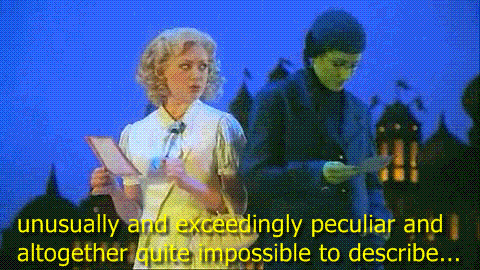“I just couldn’t connect with your story”: it’s the death knell of any querying author’s hopes and dreams. But what does that mean? How to create that elusive connection? It requires more than a compelling character or intriguing plot. It’s about the why of it all—the emotional core of the story.
As with every post here, a disclaimer: I am not an expert on this topic. I’m writing about it here because it’s something I’m focused on in my own craft. It’s part of my learning edge, an area where I’m trying to level up. It’s also an area in which I’ve learned a lot in the last year. In case my explanations fall short, I’ve included lots of links to other resources on these topics for anyone who wants a deeper dive.
Here’s what I do know: as a reader, if you give me a unique voice, make me care about the characters as people, and make me feel for them, I’m more likely to overlook any number of other writerly quirks and rule-breaking to find out what happens next. When I start to feel restless and cranky about the details, it’s probably because I’m having trouble caring. Some element in the text, or missing from it, has left me disconnected from the emotional core.

As the podcast Writing Excuses notes, most people don’t actually want to read a book. What they want is to feel something. Note the issue of emotional disconnection is very clear for me when I am reading, but far less so when I’m writing. I’ve had to work hard on developing the (linked but not identical) skills of character voice and conveying emotion. There are levels to this skill, and I’m going to share them in the order in which I learned about them, starting with my old nemesis: the filter word. Dun dun dun!
What are filter words?
I first learned about filter words in the brutal critique trenches of Scribophile, where I posted a few early draft chapters of CAMBION’S LAW for feedback lo, these many years ago. Scrib has a decent introductory article on the topic in their Writing Academy section, to which some kind soul directed me. And whew, I discovered I used these constantly!
Filter words are often, though not always, verbs: think, feel, see, look, wonder, taste, smell, hear, notice. They typically refer to the act of perceiving external or internal stimuli. (A related concept, but not quite the same, is that of “filler words”—words that don’t add meaning, needless qualifiers, etc. I think it would be accurate to say that most if not all filter words are filler words, but not all filler words are filter words.) You can find lists of these words online, and editing software like Prowritingaid or Autocrit will flag them for you.
When you step back and ask readers to step back and observe the observer—to look at [the character] rather than through the character—you start to tell-not-show and rip us briefly out of the scene.
Janet Burroway, Writing Fiction
So what’s the problem with filter words? They create emotional distance between character and reader, reducing immediacy and bogging down the pacing. The theory goes that when you are experiencing exciting things in life, you don’t notice yourself seeing things or looking at them. You focus on the thing seen, not the act of seeing. You don’t think about thinking when you have thoughts racing in your brain. You don’t think about what you feel, you just feel it.
Is this really true? Not entirely, and perhaps plain untrue of some neurodiverse brains. I think about thinking all the time, but I’m an overthinker and always have been. I literally think “I’m feeling [emotion x],” because I’ve had to train myself to interpret my bodily sensations and figure out what they mean in an emotional context. If you’re a particularly analytical or self-aware person, or if you habitually distance yourself from your own emotions, you’re going to want to argue about filter words, and I feel you, I do. (See what I did there?)

Anyway, the conventions of modern, commercial writing aim to put the reader in the character’s shoes by bringing them as close as possible to the character’s raw experience. By doing this, your writing becomes tighter and more immediate. However, as with all writing rules, this is not an absolute! Sometimes it makes sense to use these words, and that’s fine. The guideline is to use them intentionally. Avoid them when your goal is to connect reader and character in the moment, so that the reader experiences the world through the character’s eyes.
Example: “I heard a woman scream and saw a man race past me toward the street. Could he be the robber, I wondered?”
Compare: “A woman screamed. Then a man raced by, headed for the street. Could he be the robber?”
Which paragraph feels more immediate and tense? Which made you feel more engaged? Does removing the filter words in the first example change the meaning of the sentences?
“Show, don’t tell” and the Emotion Thesaurus
“Show, don’t tell” is one of the most ubiquitous and sometimes the most frustrating pieces of advice offered to writers. It’s further complicated because sometimes you have to “tell” details to move the story along. (I love Patricia Wrede’s take on this!) Again, there are no absolutes in writing, no rules without exceptions.

However, I would venture to say that if your goal is to make the reader feel something, the first step is figuring out how to show that feeling. Or to put it in quasi-scientific terms, you want to activate the visceral part of the human brain that runs on sensation and symbols, not the left-brain analytical mode that defines and categorizes feelings.
The easiest way for me to contextualize this is to use my own experience of emotion. I hate to be told what I should be feeling, so I’m likely to react to even the most well-meant “I don’t want you to feel [negative emotion]” or “you should feel [happy emotion]” by gritting my teeth and digging in my heels.

Likewise, in conveying emotion, dictating what the reader should feel may backfire. If you tell them what feeling to have, or what feeling the character is having, but don’t build a believable, vivid foundation for it on the page, the emotion won’t ring true. The goal is allowing the reader to draw their own conclusions—by providing the right details to support the conclusion you want them to draw. This is why “show don’t tell” often is shorthand for “don’t name emotions, but use other signifiers to evoke them.”
When I was struggling with this, one of my critique partners recommended the Emotion Thesaurus. This writer’s resource lists the outward reactions, internal sensations, thoughts, and lists of “power words” (verbs) associated with each emotion. It’s extremely helpful if you struggle with this aspect in your writing. It’s also useful to observe that some expressions listed may absolutely not work for your character—for me, choosing the right reaction for a particular character can help deepen my understanding of them.
However, I do have my quibbles with the Emotion Thesaurus. While it’s a great tool, as my craft has developed I’ve found that it still doesn’t go deep enough.
Deep POV and “voice”
Again, I think these two concepts are closely related but not identical.
It’s often said that “voice” in writing cannot be taught, but I think that like any other aspect of craft, it’s a skill that can be learned. What makes it hard to teach is that it’s hard to define. For me, when I say a piece of writing has a strong voice, I mean that it draws me in with a rhythm and vocabulary that makes the narrator’s personality shine through the words on the page. Voice manifests in what the narration chooses to emphasize, what the narrator notices and omits, what they avoid saying or thinking about, their opinions and experiences and the context with which they perceive the world. There’s also a confidence and consistency that shines through when writing shows a mastery of voice, a sense of assurance that if the phrasing and language is unconventional, the author intended it that way.

But there are also two kinds of voice: character voice and authorial voice. And that’s where deep POV comes in.
Deep POV focuses on the voice of the character to the exclusion of all else. Full disclosure, I had never heard the term “deep POV” or “close POV” until I got connected with the Twitter writing community, and I really struggled with it. I had worked hard to develop my authorial voice, deeply influenced by classics from previous centuries, but the modern style of deep POV calls for eliminating the author’s voice from the equation. In deep POV, the narrative or authorial voice is replaced with the character’s unfiltered thoughts, feelings, experiences, and perceptions. It removes as much narrative distance as possible by minimizing filter words, “told” emotion, and tags like “said” or “thought” in order to drop the reader into the character’s headspace. It also focuses on character-specific details, ways of thinking and perceiving that are unique to them.
A fantastic example of “voicey” writing, and one of my absolute favorites in recent science fiction, can be found in the Murderbot Diaries, a series of novellas and one novel by Martha Wells. The titular Murderbot is a cyborg built to serve the will of corporations that operate virtually unregulated in a far-future multiplanetary society. Murderbot, however, has discovered a way to hack its own programming and achieve free will.
The stories are written in close first person as if Murderbot is speaking to the reader. We only know what Murderbot knows, we only read what Murderbot thinks, and every line is infused with the character’s cynical, world-weary attitude toward humanity, its dislike of eye contact and touch, and its underlying but usually unspoken rage toward the corporations that enslaved it. Murderbot does not consider itself human and does not want to be human. It measures its emotional reactions via its operating efficiency rating. And yet its self-aware gallows humor, its obsession with human media, and its clear symptoms of PTSD-related anxiety are instantly humanizing.
Wells achieves this, in my opinion, with a masterful use of voice. She mixes the technical language that one would expect an android to use with references to Murderbot’s shows, pithy observations on human shortcomings, and a surprising amount of underplayed emotion, without ever breaking character. This leads the reader to the understanding that Murderbot is neither human nor machine, but alienated from both. It is not one of us, and yet it is very much like us. Murderbot’s personhood is a strong theme throughout the series, so this juxtaposition also reflects a deeper truth that Wells is getting at.
Let your characters speak for themselves.
The best method I’ve found for quieting my authorial voice and dropping into deep POV is deliberately inviting the character to take the reins. Some writers probably do this instinctively, but that’s not how it works for me. I have to sit back and approach it almost as a roleplaying exercise, asking my characters how they would describe a specific moment. Sometimes if I am writing in third person, it helps to switch to first person, as if I am interviewing them. What would they have to say about the scene? How would they tell it to someone else? What do they notice? What do they ignore or refuse to speak about? How do they talk about themselves? In this mode, it’s as though the character is telling the story through you more than you telling the story for them.

The aspect of voice and deep POV I’m working on the most in my own writing right now is using character-specific emotional reactions, metaphors, and imagery. I love a good metaphor, but I will often dive for a piece of imagery that I find beautiful and apt even if the character might not think of it that way. This amounts to a POV slip, but it’s also a missed opportunity to use a one-off observation about the setting or events to deepen the reader’s understanding of my character, which is much more valuable than simply chasing a lovely turn of phrase.
Here’s the hypothesis I’m working with, one that sounds counterintuitive: the specificity of emotional experience makes it universally relatable.
We interact with other people and the world around us through the lens of our own unique life experiences. It’s that individual, unique perspective that makes a character seem human. When I’m reaching for symbolism, for instance, I often come up with metaphors related to dance, because I trained in ballet and modern dance for over fifteen years. I also tend to think in terms of legal jargon, because I spend my weekdays soaked in it. But unless my character is exactly like me, they won’t think in the same terms. And if they aren’t like me, if I insert my own lens of experience into their POV, it will only serve to jar the reader.
In order to write from this perspective, you must get to know your characters very well. You need to know their emotional wounds, what drives them, and why they react in certain ways. You don’t have to know these things when you start writing (discovery writer here, and I usually don’t), but if you let them take the lead, they will tell (show?) you. They might even surprise you! At the same time, this method also requires that you trust your readers to relate to the characters, even if you’re not leaning on universal emotion words like anger, fear, sadness, etc. It means you might leave more things unsaid, or say them indirectly, if your character refuses to consciously address them.

This is where we step beyond the realm of a resource like the Emotional Thesaurus. Reactions aren’t limited to physical sensations and actions, and the most powerful emotional responses often emerge internally, with a memory or a thought directly related to past experiences. It may even be a response that the character tries to suppress or swallow down, which as Mary Robinette Kowal discusses on Writing Excuses, can be a very effective way of evoking sympathy in the reader.
The basic question to ask here is why. Not just why the reader should care, but why does the character care? What experiences cause them to feel as they do? What past traumas or triumphs are at play? What motivates them? If they are a skinflint and a miser, for example, is it because they grew up in poverty, or because they were taught that savings equal success? If they have low self-esteem, did they experience developmental trauma, and if so, what was it? Whose voice do they hear in their head when they are giving themselves a hard time?

How do you handle emotion in your fiction? What are your go-to strategies for getting your characters to talk to you? Any questions about this post? Clear as mud? 😅 Let me know in the comments!


Woww I love this post, it lays out all these sticky but important concepts so clearly! (Also A+ choice of gifs! 😂) I’ve also learned so much just in the last few years from other writers and editors on twitter, especially when it comes to Deep POV, and character-specific metaphors, and I’m really trying to focus on those in all my writing now. I still haven’t checked out the Emotion Thesaurus but I really want to!
LikeLiked by 1 person
Thank you so much M.A.! I’m glad you enjoy the gifs, I always have a blast picking them especially when I’m writing about something super technical. I’ve learned a ton from other writers too and it was interesting to try to put it all together—I probably could have done a deeper dive into any one of these topics but that wasn’t the assignment I set for myself, lol. I recommend the Emotional Thesaurus but it is definitely more of a jumping off point than the last word!
LikeLike